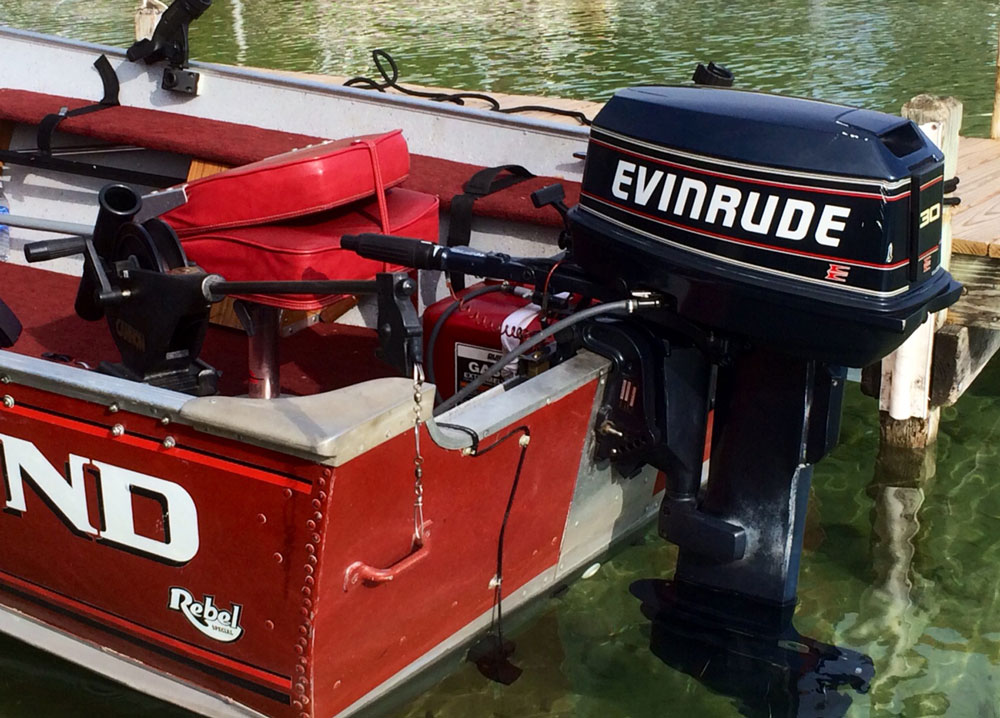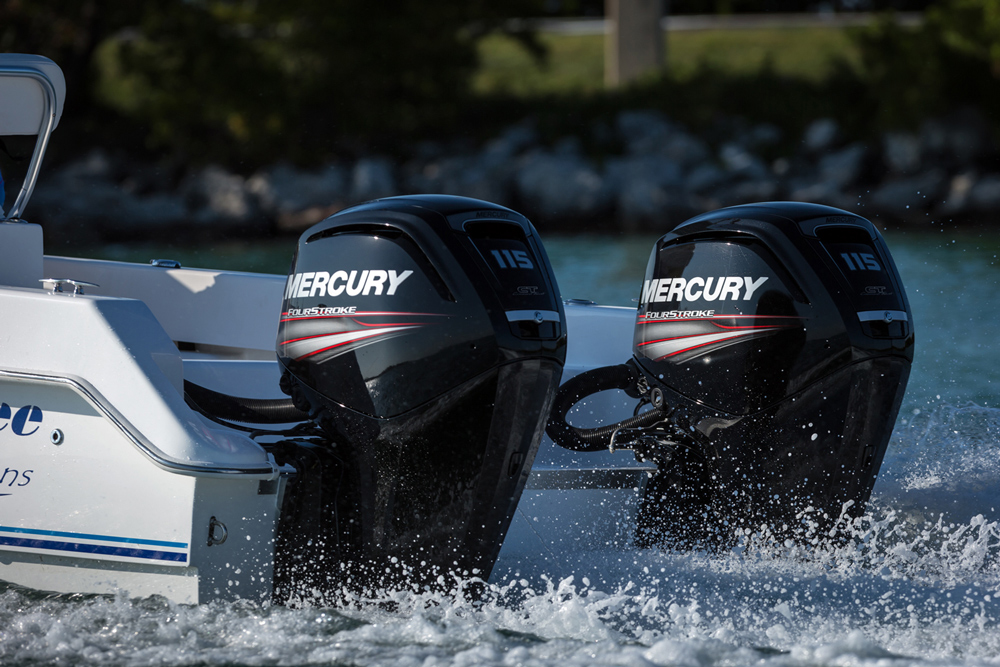Advertisement
Advertisement
Outboard Engine Cooling Systems
Outboard engine not squirting water the way it used to? Follow these steps to fix the problem, before it leaves you stranded.
June 16, 2011
Question- I’ve noticed lately that the cooling system “squirter” from my outboard doesn't seem to be squirting as strongly as I remember. What sort of problem(s) am I looking at here?

The arrow indicates the cooling water squirting out of the outboard.
Answer: There are several possibilities here, but you have caught this in time to avoid anything too horrific.
For those of you not tuned in to outboard engine operation, the “squirter” shown in the photo above is something you should look at every time you run your engine. It is the best indicator that the cooling system on your engine is functioning as it should. This is especially important on smaller engine installations that may not be equipped with a temperature gauge for monitoring such things. The relative velocity and volume of water that comes squirting from this small nozzle is quite telling to the trained eye.
On some engines the nozzle orifice has a tendency to plug up with debris and not squirt at all. I usually poke a small piece of wire into the hole to see if I can unplug it and get it to start shooting water. If that works, all is good.
If clearing the nozzle doesn’t improve the flow, that indicates either restricted cooling system flow or a weak water pump.
The water intake for your engine’s cooling system is located forward of the propeller on the lower unit housing. Look for some cast-in grating or perhaps a screwed-in plastic screen. These can become clogged up with marine growth fairly quickly, especially if the lower leg of your engine does not come out of the water completely when you’re not using your boat. If it does looked clogged, remove the screen if possible. Otherwise use a small scraper or pick to clean out the area.
If the water intake looks to be clean and you have already poked through the squirt nozzle with no improvement in the strength and volume of the flow, then the problem is most likely the water pump impeller. As impellers age, the rubber blades lose their strength and “springyness” and they will not push the water as easily as when they are new. This will reduce the pressure and volume you see coming from the squirt nozzle. Get it fixed before it fails completely.
Advertisement
Advertisement












